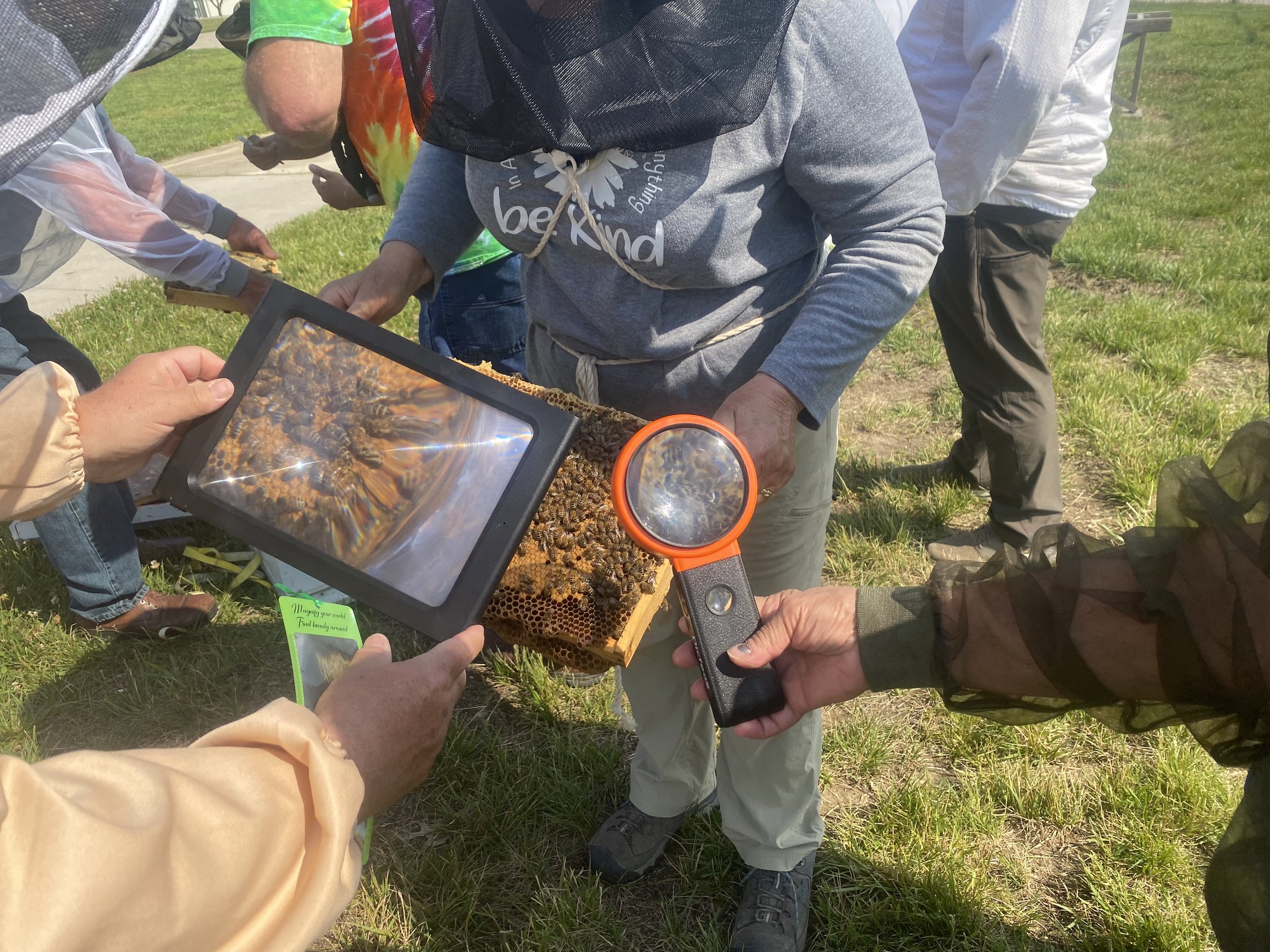Adding More Native Bees
/Dwarf peach trees are in bloom, time to add native bees to my garden. (Photo by Charlotte Ekker Wiggins)
Adding Native Bees
For years I have had several native bee houses, with residents, in my Missouri limestone hillside garden. This year I decided to add more, focusing on adding diversity to my pollinating population. My additions include blue orchard bees, which like to pollinate early crops and fruit trees; leaf cutter bees, which focus on summer crops and Osmia Texana, which are the early pollinators.
Frankly last year I was a little perplexed why I didn’t find leaf cutter bees in my garden, those are reportedly excellent summer crop pollinators. They use the cut up leaves to line their nests. Maybe I just didn’t see them, they are relatively small.
I purchased these from Mason Bees for Sale, carefully reading all of their care information so that I didn’t have them for too long sitting in my refrigerator. I also tracked the weather so I wasn’t putting them outside when the temperature was too cold for them.
This is how they arrived in a clear plastic bag:
Native bees ready to add to native bee houses. (Photo by Charlotte Ekker Wiggins)
These bamboo tubes have spent a few days in my refrigerator as I waited to see buds forming on my dwarf fruit trees.
Once those were starting, I took the tubes out of the refrigerator and added them to my existing native bee houses. I carefully cut the bamboo rod hopefully on the back end of the tube, then added at least one of each of the three native bees to each of my native bee houses.
See the new bees on the right ready to hatch? (Photo by Charlotte Ekker Wiggins)
The instructions said it can take 1-10 days for the bees to emerge. I put them out when the forecast was calling for evening temperatures above freezing.
Off to my berry patch where I slipped a couple of bamboo pieces into the new native bee house now facing the berry patch.
Another native bee house faces my berry patch. (Photo by Charlotte Ekker Wiggins)
I have had honeybees in my garden for 9 years and also found native bees among the flowers so I am hoping these will also co-exist.
We need both honeybees and native bees to continue pollinating plants for the health of the plants and to continue to provide us with nutritious, varied and healthy foods.
If you have a bee lover on your gift list, consider this beekeeper’s custom subscription box, it would make a lovely Mother’s Day gift!
Charlotte









































































